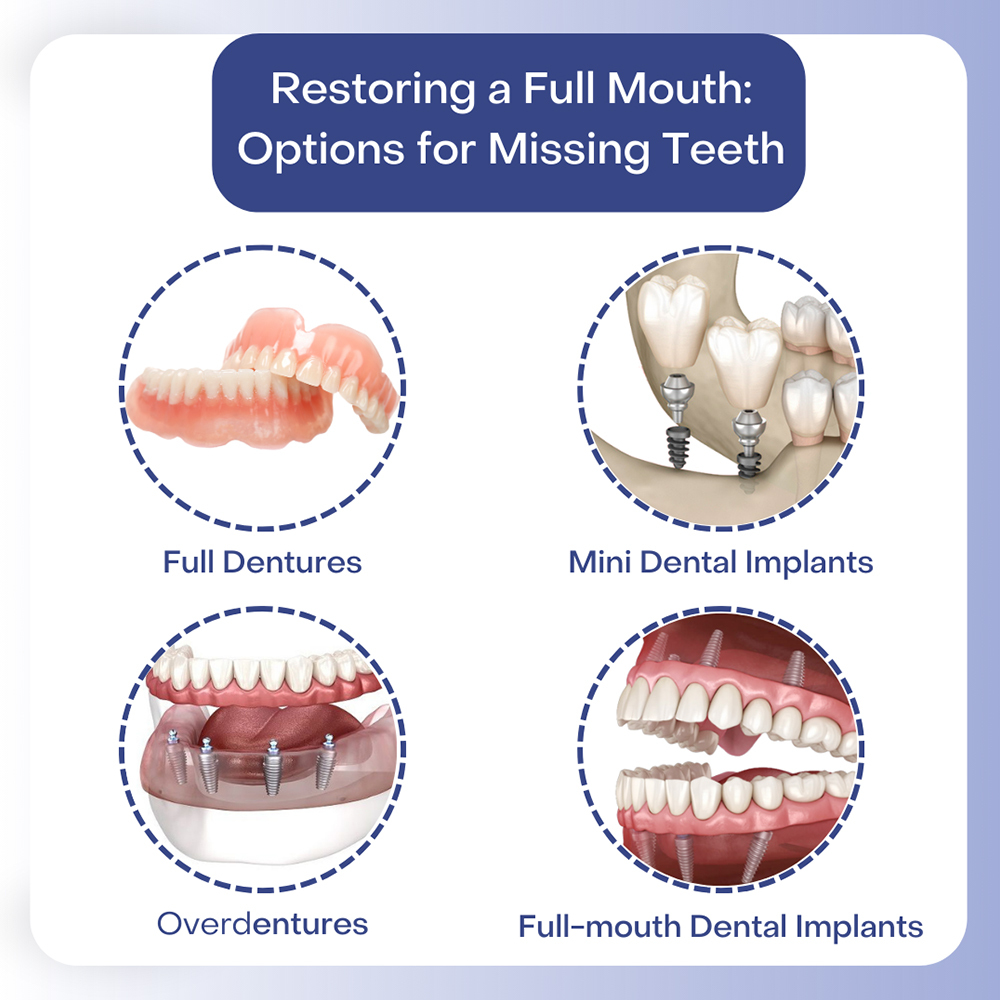Rumored Buzz on Dental Sense
Wiki Article
Get This Report on Dental Sense
Table of ContentsDental Sense Fundamentals ExplainedGetting The Dental Sense To WorkLittle Known Facts About Dental Sense.The Basic Principles Of Dental Sense
are medical devices surgically implanted right into the jaw to recover a person's capacity to chew or their look. They supply support for man-made (phony) teeth, such as crowns, bridges, or dentures. When a tooth is lost as a result of injury or disease, a person can experience problems such as fast bone loss, malfunctioning speech, or adjustments to chewing patterns that cause pain.Oral implant systems contain an oral implant body and oral implant joint and may likewise include a joint fixation screw. Dental implants. The dental implant body is surgically put in the jawbone instead of the tooth's origin. The dental implant joint is normally connected to the implant body by the joint fixation screw and prolongs through periodontals into the mouth to sustain the attached fabricated teeth
(https://www.goodreads.com/user/show/186244556-matthew-music)Framework of The Dental Implant System picking dental implants, talk with your oral provider regarding the potential benefits and dangers, and whether you are a prospect for the procedure. Things to think about: Your general health and wellness is an important aspect in determining whether you are a good candidate for dental implants, for how long it will take to recover, and the length of time the implant may stay in place.
Smoking cigarettes may affect the healing procedure and lower the long-term success of the dental implant. The recovery procedure for the implant body may take a number of months or longer, during which time you normally have a short-term joint in location of the tooth. the oral implant procedure: Meticulously adhere to the dental health instructions offered to you by your oral supplier.
The Buzz on Dental Sense
Implant failing can result in the requirement for an additional surgery to take care of or replace the dental implant system. Restores the capacity to chew Recovers aesthetic look Helps maintain the jawbone from diminishing due to bone loss Protects the health of the bordering bone and periodontals Aids keep adjacent (nearby) teeth steady Enhances lifestyle Damage to surrounding natural teeth throughout implant placement Injury to the surrounding cells during surgical treatment, such as sinus opening Injury during surgery (for instance, crack of bordering jawbone) Inadequate feature, such as seeming like the teeth do not bite with each other normally A feeling that the tooth hangs or twisting in place arising from an abutment screw loosening up Implant body failing (looseness of the dental implant body) due to systemic infection, which might be more probable in patients with unchecked diabetes mellitus due to regional infection in bone and gums supporting the dental implant body due to postponed healing, which might be much more most likely in people who smoke Problem cleansing the periodontals around the implant, resulting in poor oral hygiene Without treatment periodontal illness Post-surgical tingling because of nerve impingement or damage Always inform health treatment service providers and imaging technicians that you have oral implants before any type of magnetic vibration imaging (MRI) or x-ray treatments.FDA is not familiar with any kind of unfavorable occasions reported for MRI or x-ray procedures with oral implants. Dental implants systems are typically made from products that adhere to worldwide agreement requirements of the International Company for Standardization (ISO) or ASTM International. These requirements have details of what makes a risk-free material.

An oral implant is a structure that replaces a missing out on tooth. With screw-like tools, the doctor inserts an implant right into the jawbone, and it acts as a support for an artificial tooth, read called a crown.
Dental Sense Can Be Fun For Everyone
Some people are not eligible for oral implant surgical treatment. It is for oral cosmetic surgeons to operate people with: severe illnessuncontrollable metabolic diseasebone or soft cells condition or infectionIf these concerns are solved, a person can have the surgical treatment. In, oral cosmetic surgeons abstain from running on people with: If individuals with any one of the above undertake oral implant surgery, there is a higher threat of the implant stopping working.
Dental dental implant surgical procedure is a personalized procedure. It's not the same for everybody. But the adhering to provides a basic summary of what you can expect your dental expert, dental specialist, periodontist or prosthodontist to do: Position the dental implant operatively. Provide you time to heal. Affix the article and last crown, bridge or denture.
Next, your doctor will carefully position the dental implant right into your jaw. Your doctor will rearrange your gum tissues and close the incision with stitches. If your dental implant is near the front of your mouth, your dental professional will certainly make a short-term tooth for you to put on up until you heal. That means, you won't have a space in your smile while you recoup.
Not known Facts About Dental Sense
Your supplier can tell you what to expect in your scenario. Throughout the healing phase, your jawbone needs to fuse to the oral implant. This procedure, called osseointegration, is critical for security and long-term success. This procedure can take anywhere from three to nine months. In many cases, it might take much longer.As soon as your implant heals, your dental professional can connect the abutment (little adapter blog post) and your final restoration (crown, bridge or denture). This usually takes regarding one hour to finish and may need a 2nd small surgery. You shouldn't really feel any type of discomfort throughout your oral implant procedure since your provider will make use of drug to numb your gums.
Report this wiki page